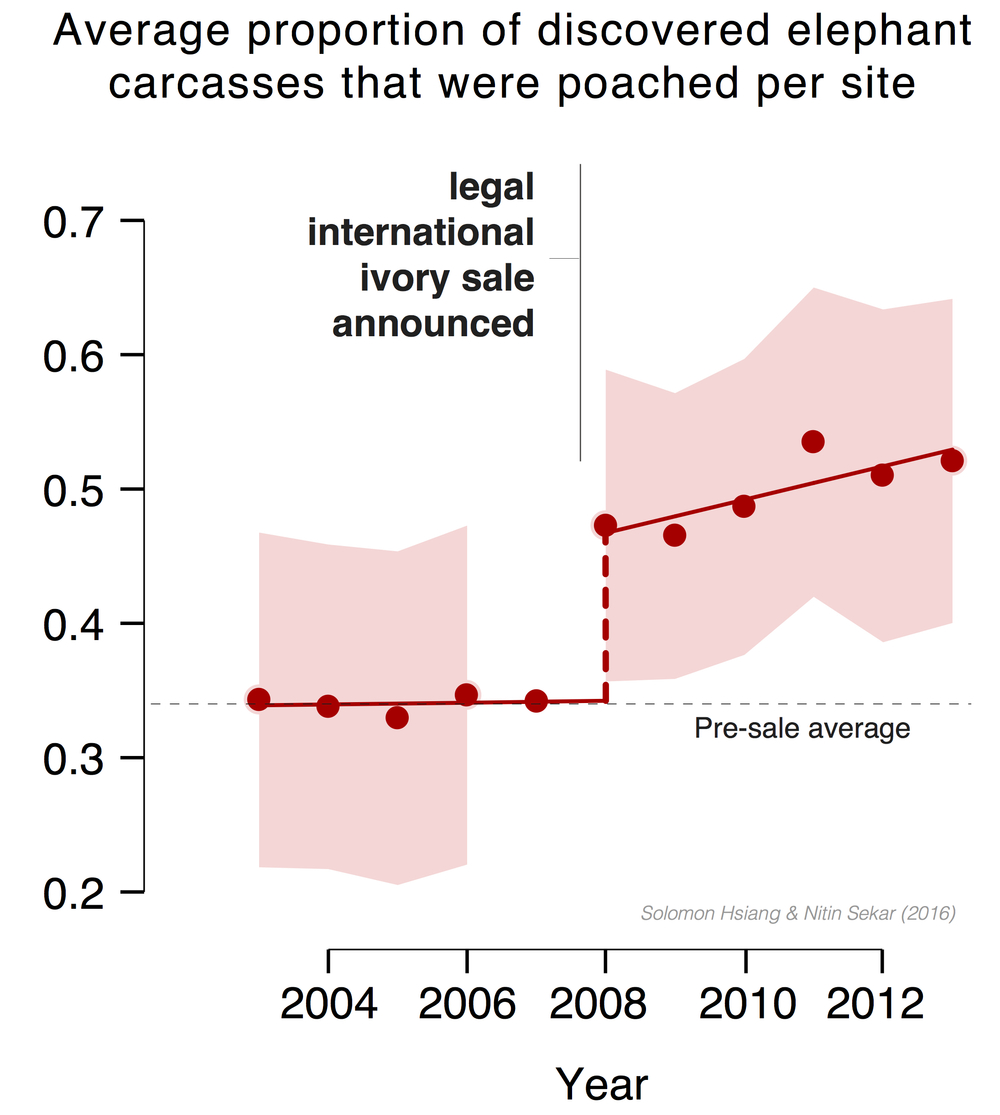Chris Blattman points to this new NBER Working Paper (sorry I don't see an ungated version anywhere) by Solomon Hsiang (UC Berkeley) and Nitin Sekar (Princeton). They clearly show that a one-time legal sale of stockpiled ivory that happened in 2008 led to a significant increase in elephant poaching. Here is the key figure from the paper:
The break in the time series is very clear - poaching increased substantially after the sale (and shows an upwards trend that wasn't apparent before the sale). So, what's going on here? Maybe the sale of the stockpiled ivory led to a legitimisation of the trade in ivory, such that potential consumers became desensitised to the negative impacts of the ivory trade? This would lead to a long run increase in the demand for ivory. So, once the one-off sale of the stockpiled ivory had passed and supply returned to 'normal', the increased demand led to an increase in the price of ivory. The higher price creates incentives for more poaching. Indeed, Hsiang and Sekar conclude:
Our results are most consistent with the theory that the legal sale of ivory triggered an increase in black market ivory production by increasing consumer demand and/or reducing the cost of supplying black market ivory, and these effects dominated any competitive displacement that occurred. In markets where supply and demand interact directly with legalization, price data are relatively uninformative as to the effects of legalization. The data indicate illegal ivory suppliers anticipate opportunities to sell and/or smuggle illegal ivory, consistent with qualitative reports...
Our findings demonstrate that partial legalization of a banned good can increase illegal production of the good because the existence of white markets may influence the nature of black markets.It's probably fair to say that the ivory sale was a colossal failure. There are better ways of dealing with poaching. See my other posts (linked below) for some examples.
[HT: David McKenzie at Development Impact]
Update: Development Impact covers the subsequent debate about the results of the Hsiang and Sekar paper.
Read more:
- Free market environmentalism gone wrong
- Can technology save the rhinos?
- Because crushing ivory is so much better than burning it
- Poisoning rhino horns to save the rhinos
- This couldn't backfire, could it?... Ivory burning edition
- Lions are dying to be saved

No comments:
Post a Comment